What is Front/Rear/Hang/Side? What are the advantages and disadvantages of each?
What is Front/Rear/Hang/Side? What are the advantages and disadvantages of each?
The installation and projection methods of projectors are roughly divided into front projection, rear projection, ceiling projection, and side projection, and the side head has only emerged recently this year.
Today I will analyze the principles, advantages and disadvantages of these four projection methods!
①The projector is projected

Principle:
Front projection, also known as front projection, is the most widely used projection installation method, and it is also the installation method supported by the most projectors. Front projection means that the projector and the viewer are on the same side of the screen.
Advantage:
Space saving: Most of the reasons why people choose projectors are that the projector can project a larger picture in a smaller space. However, in order to obtain the largest possible projection area, in addition to using a wide-angle lens, it is to use as much as possible. The projection distance increases. Since the audience and the projector are on the same side, the ideal situation is that the projection distance is equal to or greater than the viewing distance of the audience, so that the projection area can be maximized. From another point of view, to obtain the same projection area, front projection should save space than rear projection.
Low requirements for the projection screen: The front projection method relies on the projection screen to reflect light, so unless the image requirements are harsh, as long as the general projection screen can meet the requirements, even some people directly project on the white wall. Therefore, the front projection method has very low requirements on the projection screen, and the flexibility and environmental adaptability are stronger, that is to say, the front projection method is suitable for most occasions.
shortcoming:
Poor projection effect: relative to rear projection. If the viewing environment of the audience is brighter occasions such as teaching, training, conferences, exhibitions, advertisements, etc., since the light path will be disturbed by light, the image will become blurred or even the color will be distorted. If the reflection deviation of the projection screen is considered in the Inside, the effect is hardly satisfactory.
Affect the aesthetics of the environment: Because the projector is on the same side as the audience, the appearance, interface and wiring of the projector are exposed. Even a projector with a wireless network connection can only reduce the part of the wiring related to the network connection, and most of the basic wiring cannot be saved. Whether it's a home, classroom, office, or presentation hall, a multitude of cluttered wiring can take a toll on the landscape. Therefore, front-projection projectors are generally ceiling mounted to solve this problem.
Loud noise: Although the projector has a certain amount of noise in the normal working environment, the audience is on the same side as the projector, and if the distance is too close, the nois
②Projector rear projection
principle:
In addition to the traditional rear-projection TV that adopts the rear-projection method, more and more projectors now also support this installation method. The so-called rear projection means that the audience and the projector are separated on both sides of the projection screen
Advantage:
The projection effect is good and does not affect the appearance: in the rear projection mode, the audience sees the transmitted light, thus avoiding the blurring caused by the reflection of the projection screen. Moreover, the projection light is usually spread in a closed dark room, which greatly reduces the light interference, and the projection effect has risen to a new level. That is, the only interference is between the audience and the projection screen. It can be said that the rear projection method has the advantages of a large projection area of the projector and a clear and bright rear projection TV.
Although the rear-projection type also has wiring, all the wiring can be hidden in the dark room. In addition, if the dark room is embedded in the wall, the whole room will appear cleaner and more stylish.
shortcoming:
Rear projection takes up a lot of space: To project an area of the same size, in theory, rear projection requires twice the depth distance than front projection, which puts forward higher requirements for the application site. This is the biggest factor hindering the development of rear projection. In fact, it is not impossible to solve this problem. Rear projection refraction is one of the most commonly used methods. After one or more reflections, it is projected onto the screen, thereby reducing the depth distance and saving space.
Small rear projection area: The small projection area makes the rear projection method vulnerable to the enemy: on the one hand, it is under the pressure of the large area of the front projection method, and on the other hand, it is oppressed by the rear projection TV market. It can be said that it is difficult to grow in the slit.
③Projector ceiling
principle:
Ceiling projection corresponds to table projection (also known as desktop), and front and rear projection can be used regardless of ceiling or table.
The so-called hanging projection means that the projector is fixed and hoisted on the ceiling by installing a hanger and using screws and bolts. The desktop type is to place the projector on a horizontal surface in the room. The main difference between the two is whether it is fixed or not.
Some people think that the table type can be moved at will, isn't that more convenient? In fact, it is not. Generally speaking, the advantages of hanging installations outweigh the disadvantages.
Advantage:
Ceiling drop reduces projector cost: because there is no need to move it. The weight and size of the projector are irrelevant, which means that once users plan to use a ceiling projector, they can choose some larger and more affordable projectors without any hesitation. In addition to being more cost-effective than comparable portable models, the bulky projector also has much better cooling performance. Moreover, fixing makes the projector immune to the side effects of vibration, especially during normal operation, the vibration of the projector may directly cause the filament to vibrate, which is tantamount to suicide. Extending lamp life is also an important means of reducing projector costs.
The ceiling projection is easy to adjust the projection angle and position: Although the projectors are equipped with vertical keystone correction function, the correction function is at the expense of the image quality, so it can be avoided as much as possible. Therefore, during installation, try to make the center point of the projector lens and the center point of the projection screen on the same horizontal line.
However, with desktop-mounted projectors, the center point is always below the center point of the screen, so vertical keystone correction is unavoidable.
Another installation requirement is that the projection light should be perpendicular to the projection screen, otherwise there will be keystone distortion in the horizontal direction, and horizontal keystone correction is required, which is a luxury feature only supported by high-end machines. Therefore, as long as the projection distance and the position of the center point are calculated clearly during hoisting, once fixed, frequent shifting and correction can be avoided in the future. Therefore, the fixed hoisting seems to be inconvenient, but it actually saves a lot of effort.
Ceiling-mounted projectors are good for cabling: Although ceiling-mounted projectors tend to give people an unobtrusive feeling, their cabling can be routed to the ceiling through the wire trough or through the center of the stand. Moreover, the fixed hoisting can be pre-planned during the civil construction planning, which is also impossible for the desktop type.
shortcoming:
The signal is easy to be attenuated: the ceiling-mounted projector is usually far away from the signal source, and considering the twists and turns of the wiring, it is very common for the signal cable to be longer than 15 meters. However, the signal transmission beyond this transmission distance will cause the input projector. The signal will be attenuated, and the projected picture will be blurred, trailing, or even shaken. To this end, a signal amplifier must be installed for the signal source.
Routine maintenance inconvenience: The chance of a fixed ceiling mounted projector being disassembled is very small, unless something goes wrong. Therefore, routine maintenance such as dust removal, filter replacement, lens cleaning, etc. are usually neglected, which will reduce the lifespan of the projector. Plus, changing bulbs is a chore.
Installation needs to be carried out by professionals: in order to ensure reliable installation, it is generally necessary to install, fix and adjust by professionals. Moreover, the hanger necessary for hoisting must be of the right size, and the screws and bolts must also be matched. This part of the accessories is often monopolized by the manufacturer, and the user can only accept it helplessly.
④Projector test
Side projection is an installation method that has emerged in recent years, usually paired with a desktop type. Some presentation halls that did not have projectors originally did not have a reserved position for the projector. Even if the projection screen was temporarily reluctantly hung up, the projector would have nowhere to go.
At this point, the side projection comes in handy: the projector does not need to be placed in the direction opposite to the projection screen, as long as the horizontal keystone correction is adjusted, the picture can be restored to normal.
Original text from: https://www.znds.com/tv-1193100-1-1.html
#projector #projectorscreen #120inchscreen #alrscreen #Projectorinstallation



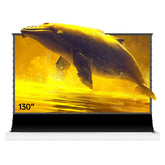
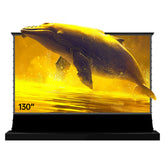
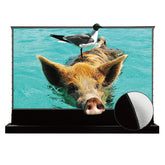
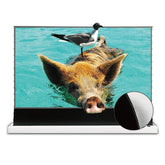
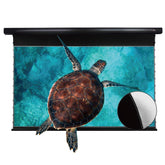
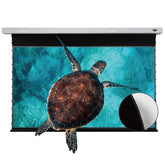
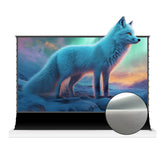

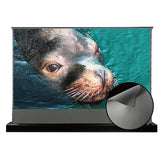
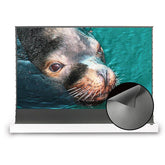

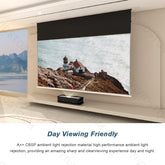
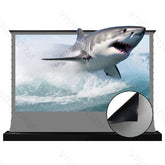

Leave a comment
Please note, comments need to be approved before they are published.